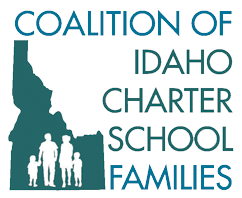September Newsletter
/Breaking news: Please everyone take a look at this article discussing Idaho's public school funding formula. There are changes on the horizon for how we fund our students schools K-12.
We NEED parents to help us make sure that the money follows the child and to help talk to legislatures to keep our schools alive. We are holding a meeting this Thursday, September 28th @4:30PM to talk more about the issues facing our students and ways we can help!
The meeting will be held at the Idaho Wheat Commission building in downtown Boise near the Capitol.
Address:
821 W. State Street
Boise, ID 83702
Please call Murphy Olmstead at (208) 871-3885 if you're planning to attend.
via IdahoEdNews.org
SLOWLY, A SCHOOL FUNDING FORMULA REWRITE TAKES SOME SHAPE
Kevin Richert 09/22/2017
It took more than a year, but the work of the Legislature’s school funding formula committee began to take shape Friday.
Lawmakers agreed to pursuing an enrollment-based funding model — a nuanced but significant shift from the long-standing status quo.
The premise is that an enrollment-based model is more student-based. In other words, the state’s K-12 dollars should more easily follow kids through the K-12 system.
So what does all this mean? And what did lawmakers discuss Friday? Here’s a primer.
What are we doing now, and why? Idaho’s school funding metric is “average daily attendance.” School districts and charter schools tally up the average number of kids in their classrooms. The state then transfers that number into classroom “support units” and divvies up tax dollars by unit.
Idaho has used an ADA metric for years, hoping it will give schools incentive to keep a close eye on day-to-day student attendance. The “support unit” model also provides rural schools with more money per student — since small districts still need to hire teachers and maintain classrooms for smaller numbers of students.
And enrollment-based funding? The math is simple enough. Now, districts and charters would tally up the number of kids they have enrolled. Then, the state would send out money per student.
What’s the advantage of enrollment-based funding? There are several, committee members say.
Follow Idaho EdNews on Facebook for the latest news »
An enrollment-based model syncs up better with “mastery-based” learning — a move that allows students to move through the school system based on subject knowledge, not classroom seat time. Under an enrollment-based model, schools won’t be penalized if students take offsite career-technical courses. And schools can get partial funding for a student who spends a period or two on campus — such as, for example, a home-schooler who comes to high school for orchestra or choir.
So, it’s that simple? Maybe, maybe not.
States can always use line items to earmark money — and Idaho has line items that cover everything from classroom technology to hiring IT staff.
But the more money the state puts into line items, the less money it has to put into the per-student funding base. And members of the funding formula committee are hoping to streamline the budget, reducing line items and giving schools additional local control.
Have other states made a similar move? A few years ago, California ditched a restrictive K-12 budget that was replete with line items. Now the nation’s largest state distributes K-12 dollars per student.
Dollars vary by grade level: Schools get $6,947 per student in fourth through sixth grade, for example, and $8,505 per high school student. Schools get additional funding for students in poverty, foster children and students with limited English skills.
To read the entire article follow this link https://www.idahoednews.org/news/slowly-school-funding-formula-rewrite-takes-shape/
The next Committee meeting will be on Monday, October 16th. To learn where it will be held at and what time please go to this link to find out more!



